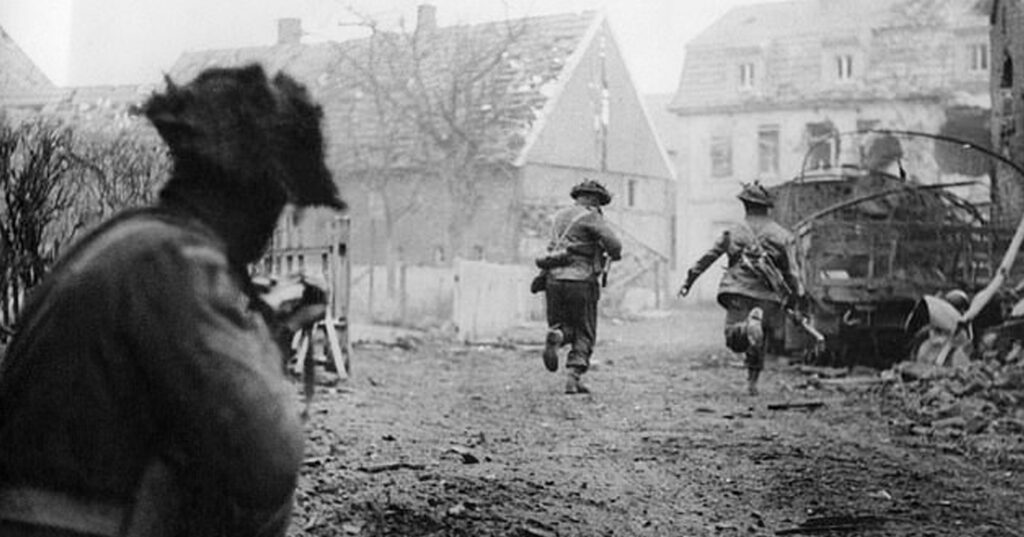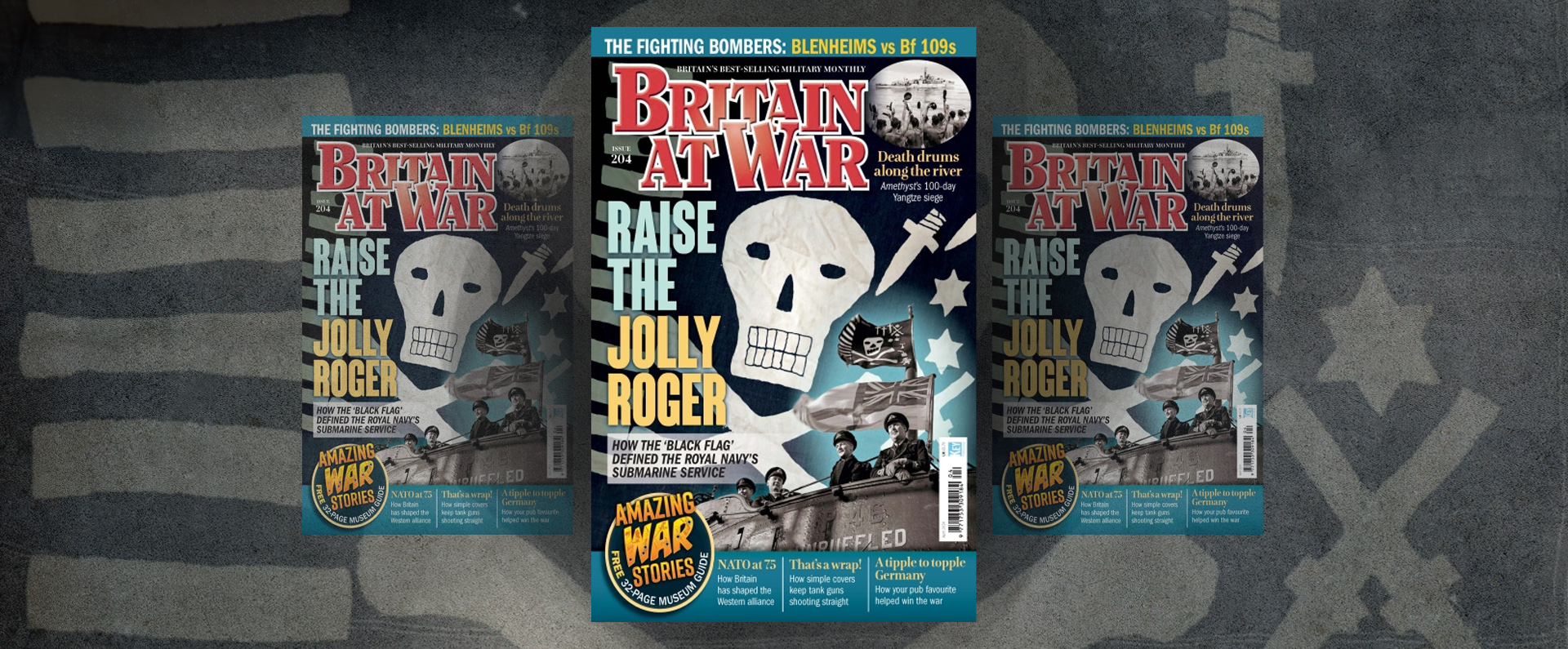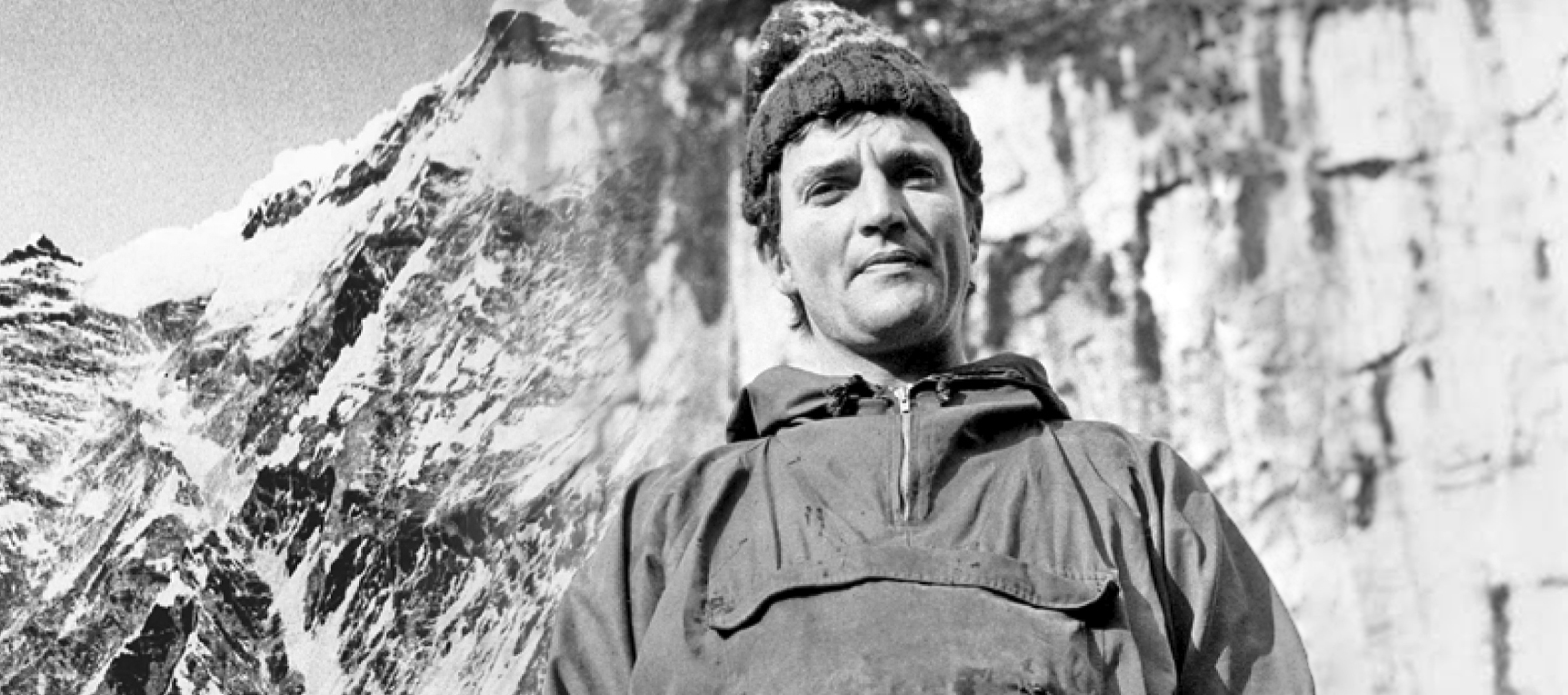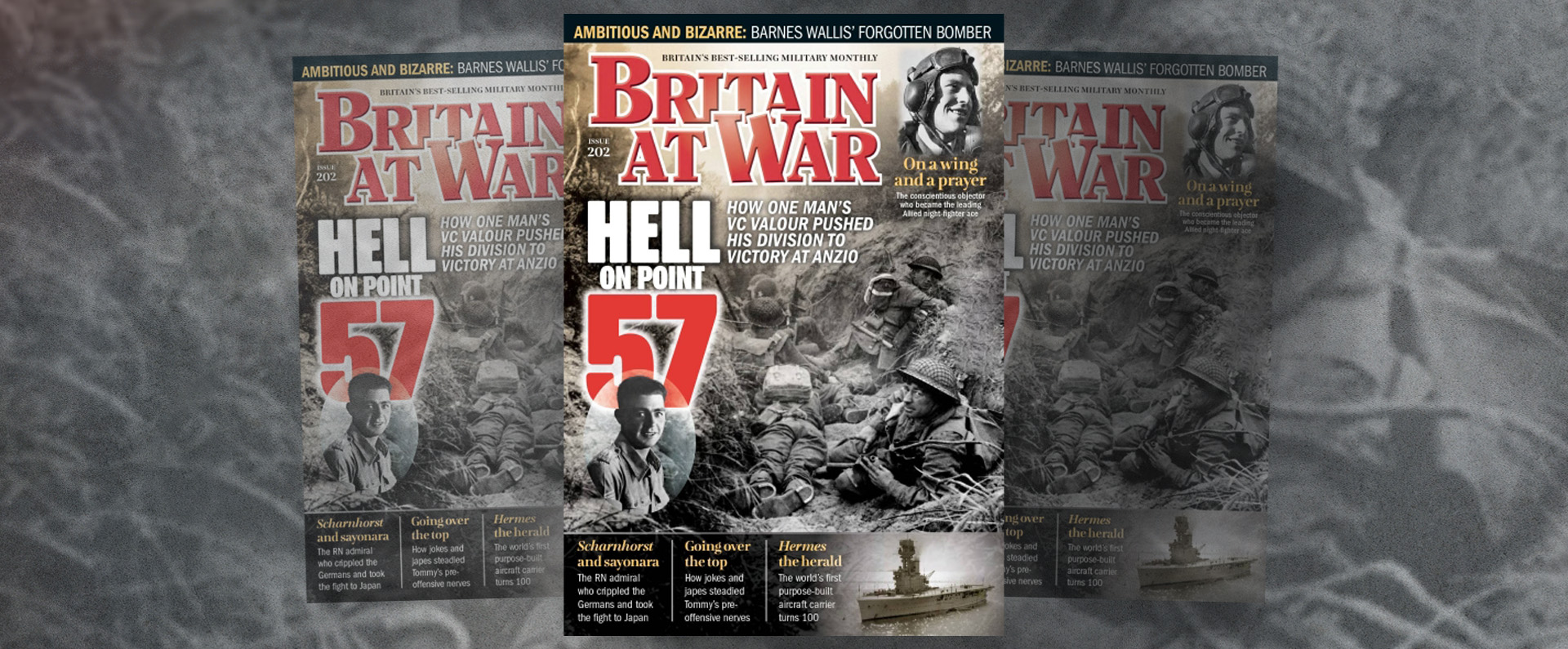
Published in the Mail on Sunday on 03 May 2020.
Guardsman Edward Charlton
By late April 1945, the German army was in retreat and, after nearly six long years of war, the Allies were finally poised to defeat Adolf Hitler. For many British servicemen, particularly those who had served for all or most of the Second World War, thoughts inevitably turned to surviving the last battles and returning safely to their loved ones.
Yet for one man, Guardsman Edward Charlton of the Irish Guards, his finest hour was yet to come. For just days before Hitler’s suicide and, later, Germany’s surrender, he would display such outstanding bravery that he would be awarded the final Victoria Cross (VC) of the war in Europe.
His decoration was all the more remarkable because it relied heavily on the testimony of enemy soldiers who, once they were taken prisoner, told how they witnessed Charlton’s last stand. Writing now, just days before the 75th anniversary of VE Day on May 8, I feel privileged to be able to tell the story of this soldier’s valour.
With Allied forces advancing through Germany itself from the Rhine to the Elbe, XXX Corps had reached the outskirts of the ancient city of Bremen by April 20. The commanders were keen to prevent enemy reinforcements reaching Bremen from Hamburg to the north-east and, with this in mind, the 2nd Battalion, Irish Guards – part of the Guards Armoured Division – were ordered to block their route.
One troop from No1 Squadron, 2nd Battalion, advanced northwest from the town of Elsdorf to the village of Wistedt, two miles from a nearby autobahn, but they withdrew at dusk even though there was no sign of an enemy force in the area. The next morning, April 21, No1 Squadron and a platoon of infantry returned to Wistedt to reoccupy the village.
Among the advancing party, as the drizzle fell, was Guardsman Edward Colquhoun Charlton. Born in Rowlands Gill, near Gateshead, Co Durham, on June 15, 1920, he had worked in a Manchester abattoir after leaving school at 14 and was encouraged to join the Royal Army Service Corps, whose roles included supplying food for the Army, when war broke out in September 1939.
Instead, however, he volunteered for the Irish Guards. Still only 19, he wanted to see frontline action and hoped to join the police after the war, knowing that the Manchester and Salford forces employed only former Guardsmen. He was called up the following year and mobilised on September 19, 1940. After training at Caterham in Surrey, Charlton, the middle of three brothers, joined the 2nd (Armoured) Battalion, Irish Guards, in 1942.
Known as both ‘Eddie’ and ‘Ed’, he became friends with Guardsman James Mendes, who said later that ‘Ed’s regiment was the biggest thing in his life’. Charlton penned several letters home, including one in 1942 in which he seemed disappointed not to have seen frontline action.
‘Why we have been kept back so long I don’t know, but our day is coming,’ he wrote. Several months after D-Day, he moved with his battalion through Belgium and Holland, writing home to tell his family how grateful the locals had been to be rid of the German occupation and detailing their terrible deprivations during this time.
In early 1945, he wrote to his parents saying: ‘Don’t worry, Mum. I don’t take any more risks than I have to so I will come through this lot with flying colours.’ As the British forces advanced into Germany, Charlton joined No1 Squadron and was the co-driver of a Sherman tank.
He found himself on the outskirts of Wistedt at first light on April 21, 1945, as a driver in one of four tanks rolling into the outskirts of the village, some with men riding on the back of the vehicles. Soon, in the best traditions of the British Army, they stopped to set about ‘brewing up’ using their Tommy cookers, or portable stoves.
However, before they could enjoy their hot tea, the men were ambushed by a large enemy force. As Lieutenant (later Captain) Barry Quinan stood in the middle of the road looking through binoculars to see what lay ahead, an armour-piercing shell passed so close to his head that it blew his black beret off before hitting a house behind him.
Then, in the words of one eyewitness, ‘all hell was let loose’, with most of the fire coming from the right flank. Shells, mortars and machinegun fire rained down on the soldiers: a young corporal was the first to die, hit by a German SP (self-propelled) gun so that he fell back down into his tank.
Eyewitnesses saw Charlton and his co-driver race from their own Sherman after it had been hit and take shelter between two houses. With three of the four tanks knocked out and with the Irish Guards almost entirely surrounded and short of ammunition, the order was given to retreat.
Several soldiers were unable to pull out in time and were eventually forced to surrender. It later emerged, however, that, with his party in danger of being overrun, Charlton, aged 24, had decided that attack was the best form of defence against a large force from the 15th Panzer Grenadier Regiment supported by six SP guns.
His citation for his VC takes up the story: ‘Whereupon, entirely on his own initiative, Guardsman Charlton decided to counterattack the enemy. Quickly recovering the Browning [machine gun] from his damaged tank, he advanced up the road in full view of the enemy, firing the Browning from the hip.
‘Such was the boldness of his attack and the intensity of his fire that he halted the leading enemy company, inflicting heavy casualties on them. ‘This effort at the same time brought much-needed relief to his own infantry. ‘For ten minutes Guardsman Charlton fired in this manner, until wounded in the left arm.
‘Immediately, despite intense enemy fire, he mounted his machine gun on a nearby fence, which he used to support his injured left arm. He stood firing thus for a further ten minutes until he was then again hit in the left arm, which fell away shattered and useless.
‘Although twice wounded and suffering from loss of blood, Guardsman Charlton again lifted his machine gun on to the fence, now having only one arm with which to fire and reload. Nevertheless, he still continued to inflict casualties on the enemy, until finally he was hit for the third time and collapsed. He died later of his wounds in enemy hands.
‘The heroism and determination of this Guardsman in his selfimposed task were beyond all praise. Even his German captors were amazed at his valour. ‘Guardsman Charlton’s courageous and self-sacrificing action not only inflicted extremely heavy casualties on the enemy and retrieved his comrades from a desperate situation, but also enabled the position to be speedily recaptured.’
Those who survived the ambush and returned unscathed did not know exactly who among those missing had been killed and who had been taken prisoner. In the hope that he was still alive and in the knowledge that he had shown great bravery, Charlton was initially recommended for the Military Medal (MM).
However, by May 10, 1945, two days after VE Day, the recommendation was marked ‘unsuccessful’. This was because it had emerged that Charlton was dead and that the MM could not be awarded posthumously.
Fortunately, a far more vivid and accurate account of Charlton’s astonishing gallantry started to emerge, first from Sergeant Jim Connolly, who had been captured by the Germans on April 21 but later released after the German surrender. Connolly had not personally seen all of Charlton’s last stand but he had been told by a senior German officer about his courage.
Connolly set about informing senior officers of the precise details and they were able to confirm them with German prisoners who had observed the counterattack at first hand.Those who bore witness to Charlton’s bravery included Lieutenant Hans-Jurgen von Bulow, the company commander who was awarded an Iron Cross First Class for leading the successful attack at Wistedt.
Connolly said later that had it not been for Charlton’s courageous efforts in holding up the German advance, he did not think there would have been any Allied survivors from the ambush.
In fact, after many soldiers on both sides were interviewed, Charlton’s VC was announced in the final wartime Honours List published on May 2, 1946. It is extremely rare but not unprecedented for the testimonials of enemy servicemen to play a part in the award of a VC.
In fact, the decoration to Flying Officer Lloyd Trigg for bravery in the air on August 11, 1943, is the only VC to be announced solely on evidence given by the enemy. Trigg, of the Royal New Zealand Air Force but serving with 200 Squadron, RAF, was decorated posthumously after two German officers testified how he had attacked their surfaced U-boat at a range of just 50ft in his Liberator bomber, despite having been hit previously by anti-aircraft fire.
Former comrades of Charlton were overjoyed by the news of his VC, announced more than a year after the action. Sergeant Hugh Gallagher, who had been wounded and taken prisoner during the April 21 ambush, wrote to Charlton’s parents saying: ‘I am writing this letter to you in reference to your son Eddie.
Today I am one of the happiest men in England after I had seen in the paper of his reward, the VC. It was only through his gallantry that saved my life that I am able to write to you. The work he did that day is indescribable, he saved quite a lot of our lives though badly wounded.’
Gallagher also revealed that Charlton, badly injured and by then a prisoner of war, had said farewell to his fellow PoW with the words ‘Up the Micks’, an affectionate reference to his Irish comrades. Charlton died from his wounds just hours later.
Shortly before the June 8, 1946 Victory Day Parade in London, Guardsman James Mendes wrote an emotional tribute to his best friend: ‘There is a man who will march with me on the Victory Day Parade, a man who you will not see. ‘Ed was my pal. Funny that an Englishman should have to win the VC for an Irish regiment, but that’s the way it is.
Yet after five years in the Irish Guards Ed was more Irish than English, in fact, more Irish than many of us. ‘He had the blarney all right, and a temper with the physique to make it dangerous. But he had a heart of gold. He was a man, the way real men are and should be.
He liked his beer and his fun. He lived the British way and died the British way. ‘That was Ed who goes down in the ruddy annals of British history for one of the greatest bits of heroism in this war… To me, Ed still lives. He will march with us through London. You won’t see him, but he’ll be there.’
Charlton’s posthumous VC was presented to his parents, Albert and Edith, at an investiture at Buckingham Palace on October 29, 1946. He was originally buried by the Germans near Elsdorf but he was reinterred and his grave is now situated at the Becklingen War Cemetery, Soltau, Germany.
The inscription on Charlton’s gravestone reads: ‘Greater love hath no man that he lay down his life for others.’ In 1956, Charlton’s parents gifted his medal group, including his VC, to the Irish Guards and it remains on display at their regimental headquarters at Wellington Barracks in Central London.
There is no doubt in my mind that Charlton’s VC action was not just the final one before VE Day but that it represents one of the finest wartime actions in the decoration’s long and rich history. Days before VE Day, this is the right time to remember and to honour one of ‘the bravest of the brave’.
Read this article in the MailOnline
For more information, visit:



